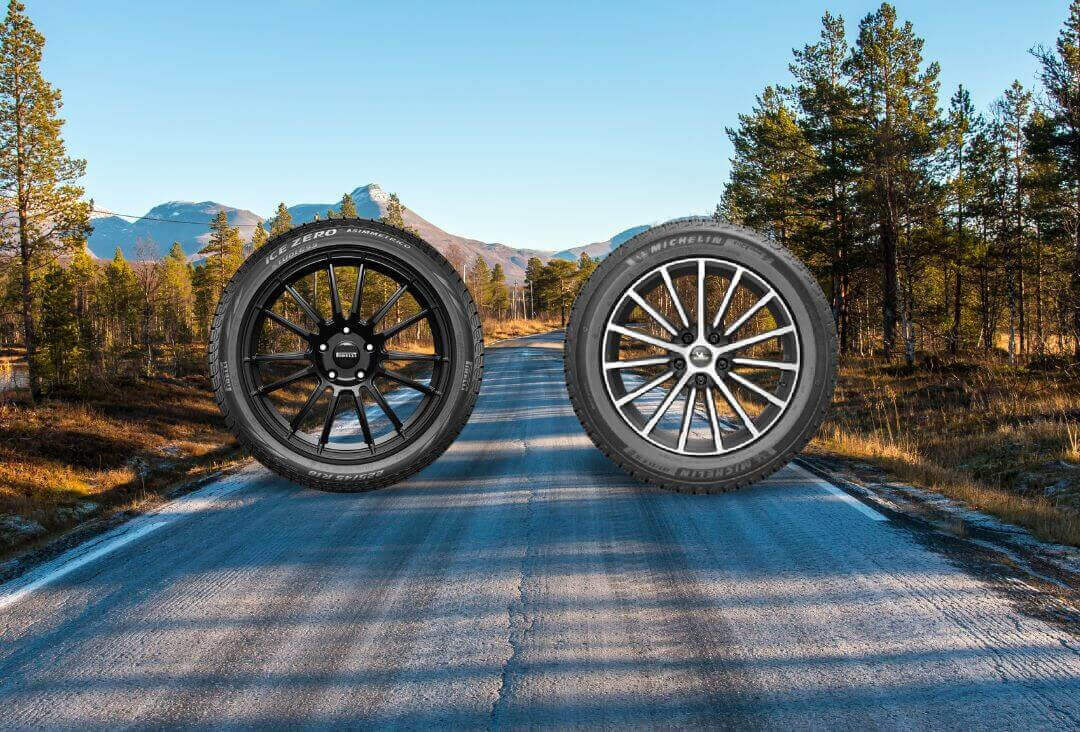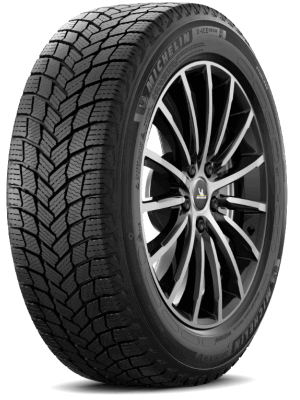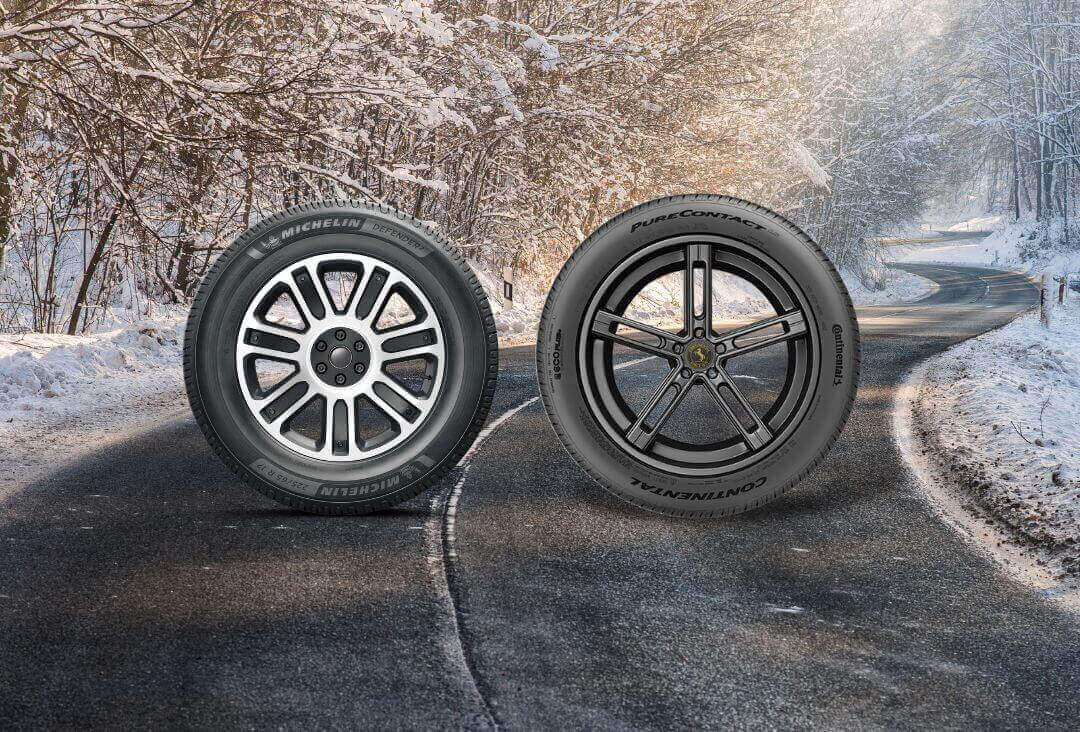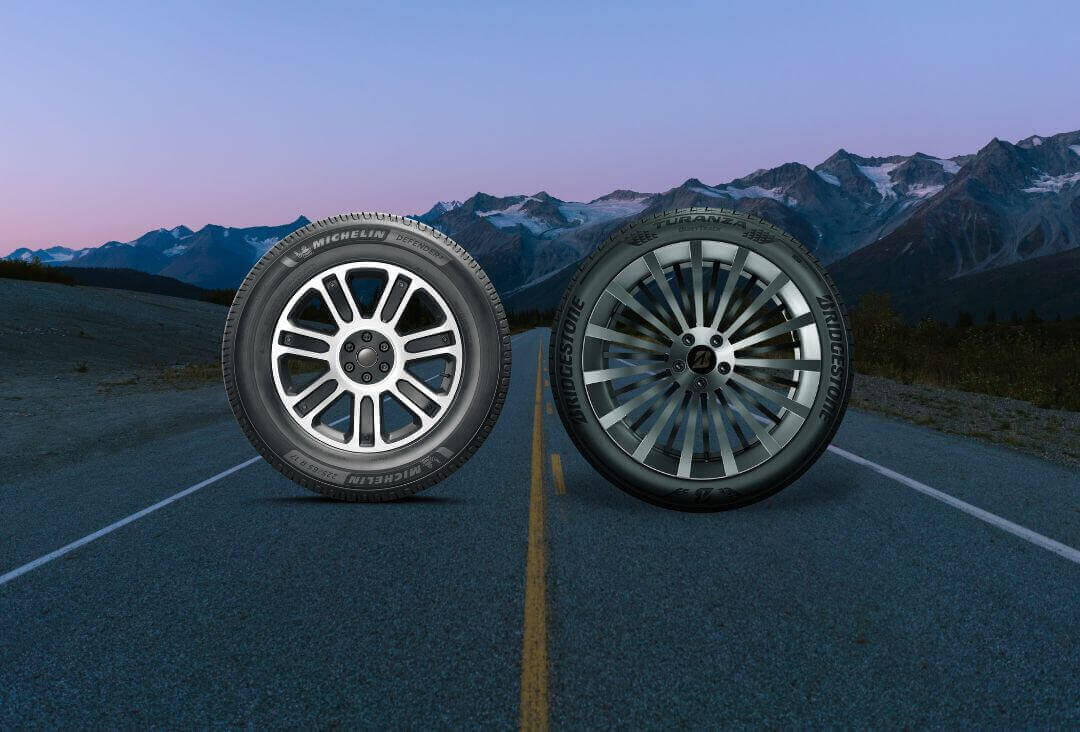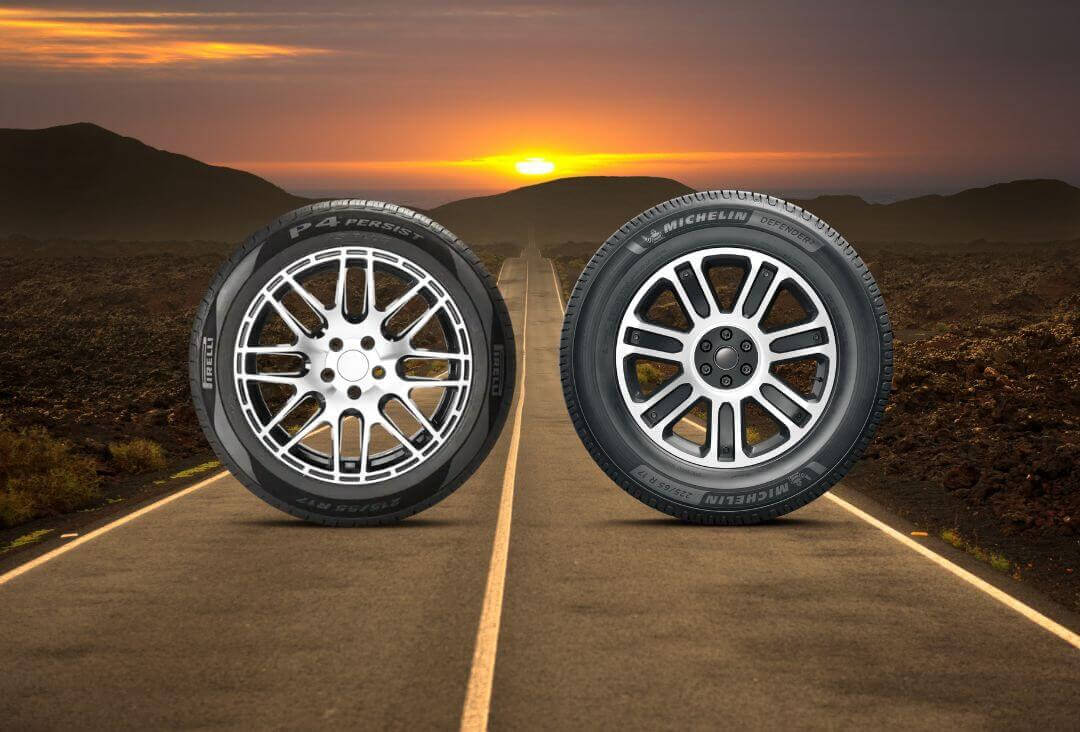Are you looking for the very best tires to help you face the harsh cold season that is quickly approaching? Discover the Pirelli Ice Zero Asimmetrico vs the Michelin X-Ice Snow tire models in this chilling duel!
Blackcircles Canada offers a detailed comparison between these two non-studded winter tire models.
How do the Pirelli Ice Zero Asimmetrico vs Michelin X-Ice Snow compare
If you are looking for new performant winter tires, the Pirelli Ice Zero Asimmetrico vs Michelin X-Ice Snow are probably on your list. Both belong to the winter tire category that we refer to as “ice tires”.
This category refers to a type of tire that is particularly efficient on icy road surfaces, just as the word “ice” in their titles indicate! So, these are great tires for urban drivers or those who regularly drive on highways, where road surfaces are more often icy than they are snowy.
Despite this common strength, the two tire models also differ on many other aspects. On the one hand, the Pirelli Ice Zero Asimmetrico is offered in 49 different sizes that range between 15- to 20- inches, most of which are offered in 17- and 18- inch diameters. It is perfectly suited for both touring vehicles and SUVs, and to a wide array of models.
The Asimmetrico has been added to the Ice Zero family, where you will also find the FR. This means it is a new model, offering a different tire profile than the other available models.
As its name indicates, it has an asymmetrical tread, which translates into important changes when it comes to road handling.
On the other hand, the Michelin X-Ice Snow tire offers an impressive array of available dimensions, for a total of no less than 128! They vary from 15- to 22- inches and are perfectly suited to a wide variety of different vehicles, like:
- Touring vehicles
- Performance/Luxury vehicles
- Minivans
- Crossovers and SUVs
Amongst other things, these Michelin tires are also compatible with electric vehicles.
In short, both these tire models are ‘ice tires’, although they seem to be more different than they are similar! Let’s take a closer look.
Pirelli Ice Zero Asimmetrico: Specifications
Firstly, this non-studded tire has just been added to the Ice Zero FR models. Without replacing it, it acts as an addition in a way, a second winter tire option without studs.
This means that it is completely different from the FR, with its asymmetrical tread. It also provides you with the following characteristics:
- Wider shoulder blocks
- The integration of liquid polymers
- Deep 3D sipes
- A reduction of the tire void rate
- A double lateral groove
In this new tire, 2D and 3D sipes have been added to the tire’s design for added traction levels. In fact, they allow the tire to grip onto the ice or snow efficiently, thanks to the high density. The contact with the road surface and the traction levels have been significantly optimized.
The depth of the 3D sipes also allows them to maximise the contact pressure, which also translates into greater traction levels. Moreover, the tire’s pressure on the road is also ideal thanks to a lower void rate. This improves the contact surface and, consequently, creates better grip levels as well.
Moreover, the double lateral groove allows for the tire pressure on the road surface to be more even, which plays a significant role on the tire’s stability levels.
Finally, the tread compound has been enhanced with liquid polymers. They provide the tire with greater flexibility, which is a significant quality when the time comes to face extreme colds. This also improves the tire’s durability.
All in all, the performance offered by this new tire is quite promising!
Michelin X-Ice Snow: Specifications
The Michelin X-Ice Snow tire is also quite recent on the market as well, and was designed to replace the old X-Ice Xi3, which was already quite performant on ice. This is a strength that was definitely maintained, but others were added to it as well, making it even more versatile. It will provide you with features such as:
- Full depth 3D sipes
- Gripping edges
- A V- shaped sculptural design that is more aggressive
- The EverGrip technology
By relying on more aggressive V- shaped grooves, the Michelin model truly aims at offering tires that are more performant on wet road surfaces as well. These grooves have a wide opening that allows for quick evacuation of large amounts of water, and thus provides you with superior resistance to aquaplaning.
Moreover, the tread design is much closer to off-road tires in appearance, with large rigid blocks. This is a feature that allows it greater performance outside of the city, where roads get covered in snow. Michelin focuses on improved rigidity for an optimized contact surface in all circumstances, including during turns and accelerations.
Full depth sipes and gripping edges also contribute to the optimal traction levels on snow and ice. Braking distances and grip levels are more than safe. Moreover, the sipe depth also helps preserve the tread, even when the tire begins to wear.
In fact, the EverGrip technology allows the tire to maintain good grip levels for the duration of its life expectancy. The rubber compound that is made from rigid polymers acts like a sponge to maintain the tire’s grip capacities.
Named by The Car Guide as being one of the best 2021-2022 winter tires, there is no doubt that the X-Ice Snow is an excellent choice for the cold season.
Choose between the Pirelli Ice Zero Asimmetrico and the Michelin X-Ice Snow
When reading the specifications for the Pirelli Ice Zero Asimmetrico vs Michelin X-Ice Snow, we can quickly notice that they do share similarities despite their very different tread design.
The use of 3D sipes is one of the features both tires share in common, and so is a wider contact surface. The improved sculptural rigidity with the Michelin, or the squarer shoulder blocks with Pirelli, both offer similar characteristics as well. Good traction and grip levels on slippery surfaces are definitely at the heart of both of these ice tires’ priorities.
However, we can notice that Pirelli relies on liquid polymers that improve the tires flexibility, while Michelin focuses on a compound that increases rigidity. This means that the latter has a few more characteristics in common with ice tires.
In fact, the X-Ice Snow offers exemplary traction levels on snow, which is not the Ice Zero Asimmetrico’s main strength. Also, the directional tread does ensure very efficient water evacuation.
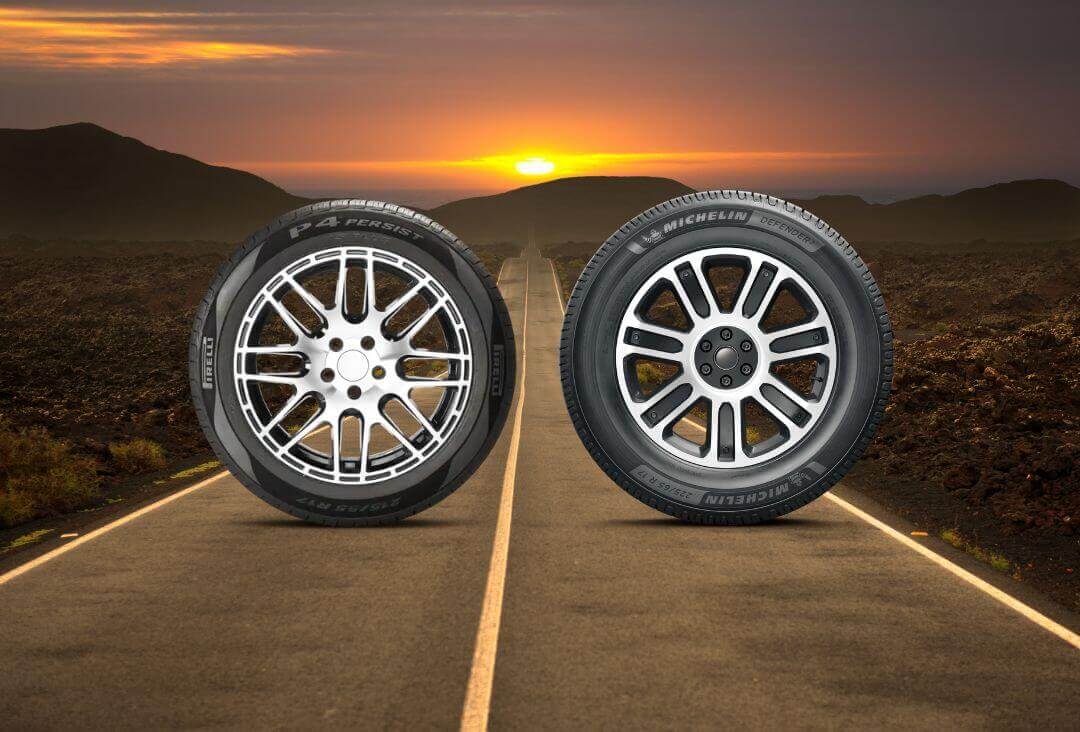 Given that they are asymmetrical tires, the Ice Zero Asimmetrico offer remarkable performance on dry roads. Stability during turns and the sporty drive they offer are undeniable qualities.
Given that they are asymmetrical tires, the Ice Zero Asimmetrico offer remarkable performance on dry roads. Stability during turns and the sporty drive they offer are undeniable qualities.Moreover, tests measuring the Michelin tire compared to the Pirelli Ice Zero FR tire had shown that the second stood out with shorter braking distances on dry roads. This is an advantage that should become even more significant with the arrival of this new tread design.
The Michelin tire, of course, still remains a great tire for dry roads, just as the Pirelli remains very safe on snowy or wet roads surfaces as well. Loyal to its reputation, the Michelin tires offer a comfortable and quiet driving experience that is worth mentioning.
All in all, both offer exceptional performance on ice, although their main strengths vary.
Comparing warranties
Michelin and Pirelli are part of the greatest tire manufacturers and both offer generous warranties.
On the one hand, the Pirelli offers the Confidence Plus program, which includes –amongst other things- a 6- year limited warranty covering workmanship and materials from the date of manufacturing. Moreover, when purchasing a set of new tires, you will have a 30- day satisfaction guarantee as well.
With Michelin, this satisfaction guarantee is longer; you will have up to 60 days to try out your new tires. Materials and workmanship are also covered, but the brand also adds a 3- year road side assistance. Finally, the X-Ice Snow tire offers a 60,000 km limited warranty on tread life.
In short, the French manufacturer offers a little more; however, prices are slightly higher than Pirelli.
Would you like some more advice to help you select your tires? Take a look at our blackcircles winter tire buying guide! A passionate team of experts will answer all of your questions.


